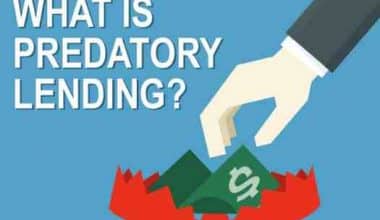The concept of a “prepayment penalty” is foreign to many homeowners. Why should you be penalized for repaying a debt ahead of schedule? That’s the thing about mortgage loans: many of them come with a prepayment penalty, which limits your flexibility and can eat into your pocketbook – just for attempting to do the right thing for your finances. There are several reasons why lenders may not want you to pay off your mortgage early, which we’ll discuss shortly. In this guide, you will get to know everything about a prepayment penalty on a mortgage, car loan, or even personal loan, irrespective of whether your location is in California or not. Let’s dive in!
What Is a Prepayment Penalty?
A prepayment penalty, sometimes known as a “prepay,” is a price paid to borrowers who pay off a loan within a few years after taking it out. Lenders often stop charging them after three to five years of loan repayment. Lenders apply these costs to discourage borrowers from paying off or refinancing their mortgages, which would result in a loss of interest income for the lender.
Prepayment penalties is a cost charged by lenders to borrowers who pay off all or part of their debts ahead of time. A prepayment penalty is specified in loan agreements and is permitted in specific loan types, such as a conventional mortgage, an investment property loan, a car loan, and a personal loan. Fees normally begin at 2% of the outstanding principle balance and gradually decrease to zero over the first several years of a loan.
Prepayment penalties are prohibited under federal law for several forms of house loans, including FHA and USDA loans, as well as student loans. In other circumstances, lenders can charge early payoff penalties, although there are time and cost constraints imposed by federal law.
How a Prepayment Penalty Works
Few people can afford to repay a debt only a year or two after taking it out. However, many people refinance their loans to take advantage of a lower interest rate or to improve their credit. Prepayment penalties might make refinancing more expensive in the first few years after taking out a loan.
Prepayment penalties differ depending on the lender and loan type. Some lenders do not charge them; in others, they are limited. Prepays are only levied during the first few years of a loan, after which they phase away (typically within three to five years).
Prepayment penalties are only applied to certain types of loans, but they are always detailed in loan documents—which is why it is critical to read disclosures before accepting a loan offer.
Types of Prepayment Penalties
Prepayment fines are classified as soft or hard.
#1. Soft prepayment penalties
A soft prepayment penalty is only applied when you refinance your house, and it is based on the language of an agreed percentage penalty in your mortgage loan paperwork.
#2. Hard prepayment penalties
When you sell or refinance your home, you will face a stiff penalty. A prepayment penalty may also apply if you attempt to pay off more than 20% of your loan debt in any one year.
What is an Example of a Prepayment Penalty?
A homeowner decides to refinance a two-year-old mortgage with a $250,000 remaining debt. If the prepayment penalty is 4%, the homeowner would be required to pay $10,000 to the original lender for paying off the mortgage early. Borrowers should be aware of their lender’s prepayment penalties; they can significantly increase the cost of refinancing or selling a home.
Types Of Loans That May Include A Prepayment Penalty Clause
Prepayment penalties are forbidden for some loan types, including as USDA and FHA loans. In some circumstances, lenders’ ability to levy prepayment penalties is limited—for traditional mortgages, for example, prepayment charges cannot begin higher than 2%.
However, in other cases, prepayment penalties are extremely common loan agreement provisions, though they may still be negotiable.
Types of loans where a borrower should be on the lookout for prepayment fees include:
- Conventional loans
- SBA loans
- Investment property loans
- Large non-recourse loans
- Loans from alternative providers
- Subprime mortgages
Why Do Lenders Charge A Mortgage Prepayment Penalty?
You might assume that a person or organization that lends money wants it repaid as soon as possible. However, mortgage lenders do not.
The lender is more at risk than the borrower during the first few years of a loan term. This is because most borrowers haven’t put down a considerable amount of money in comparison to the house’s value. That is why lenders charge you “interest,” which is a form of financial protection. If you pay off the loan quickly, they lose all of the interest fees that were included in the loan as an incentive to grant you, the borrower, a loan.
That’s why many lenders include the mortgage penalty in the first place: they offer it as a way to market lower interest rates. Knowing they’ll make up the difference over the life of the loan, or in receiving a prepayment penalty if you pay off the mortgage before they’ve recouped their costs.
How Much Will I Pay for A Mortgage Prepayment Penalty?
Prepayment penalty costs differ, as one might anticipate. However, there are some common models for calculating penalty cost:
- Percentage of remaining loan balance: In this case, they charge a tiny percentage of the outstanding principal, such as 2%, as a penalty fee if the loan is paid off within the first two or three years.
- X number of months’ interest: In this case, you just pay a total of a specific number of months’ interest, such as 6 months.
- Fixed amount: The lender enters a fixed amount, such as $3,000, for repaying a loan within the first year.This is rarely used in mortgages.
- Sliding scale based on mortgage length: The most prevalent model is a sliding scale based on mortgage terms. As an example, consider a sequential 2/1 prepayment penalty over the first two years of the loan. The penalty is 2% of the outstanding principal balance if the mortgage is paid off during the first year.The penalty is 1% of the outstanding principal balance if the mortgage is paid off during year 2.
What Is a Car Loan Prepayment Penalty?
A car loan prepayment penalty is a cost paid by lenders for paying off an automobile loan before its due date.When borrowing money for a car loan, you will most likely choose a loan period of 24-60 months. As long as you make car loan monthly payments on the loan, the lender earns interest.
If you opt to repay the loan before the due date, the lender may lose all of the interest they anticipated to earn during the remaining time. To compensate, they may charge you a prepayment penalty on your car loan.
When Do Lenders Charge A Prepayment Penalty on Car Loan?
The amount and timing of a car loan prepayment penalty varies depending on the lender. If you close the loan before the due date, certain lenders will charge you a penalty. Others, on the other hand, state that you will be penalized solely if you pay off the loan early, such as during the first six months.
How Much Will an Car Loan Prepayment Penalty Cost?
A prepayment penalty of up to 2% of the outstanding loan balance is often charged by a car lender. That means that if you still owe $10,000 on your loan when you decide to close it, you must pay a prepayment penalty of $200.
The actual amount may change between states because state laws limit the maximum chargeable prepayment penalty.
Are Prepayment Penalties on Auto Loans Legal?
There is no federal legislation prohibiting vehicle loan companies from charging prepayment penalties. Certain states, however, have passed legislation prohibiting state-run banks and institutions from imposing prepayment penalties on borrowers. This also implies that private lenders can still charge you a fee if you pay off your car loan early.
What is a Personal Loan Prepayment Penalty?
A prepayment penalty is a price charged by some lenders if you pay off your personal loan early. In other words, they loaned you money, but you didn’t repay it in the amount they expected. They attempt to compensate for this loss by imposing a prepayment penalty on your personal loan.
Do Personal Loan Charge a Prepayment Penalty?
No, some of the best personal loans do not include a prepayment penalty.
How much is a Personal Loan Prepayment Penalty?
A prepayment penalty can cost you hundreds (or thousands) of dollars, so look for a personal loan that does not have one.
The actual price varies depending on the lender, loan type, and loan agreement. The following are some examples of prepayment penalties:
- A flat fee
- A percentage of the loan balance
- The interest the lender will miss out on because you paid the loan off early
How do I Avoid Prepayment Penalty?
Certain lenders should be avoided if you want to avoid prepayment penalties on your next mortgage loan. These include alternative lenders (typically online, non-bank lenders), subprime loan specialists, and lenders who promise fast funding.
You should also avoid certain loan products in order to prevent being charged these fees. For example, it is better to avoid different loan products and instead stick to loans that can be obtained anywhere. If your lender tries to incorporate prepayment penalties, you’ll be in a stronger position to negotiate them away.
Another thing you can do to prevent prepayment penalties is to avoid frequent refinancing, which indicates to your lender that you’re more likely to refinance as soon as interest rates fall. You could also try to find a co-signer or make a larger down payment in exchange for a better loan term (including the elimination of a prepayment penalty).
Finally, if you wish to avoid prepayment penalties, you can simply wait until they have been phased out before paying off or refinancing your loan. Alternatively, you can make allowable extra payments that are less than the maximum amount of your mortgage you can pay back each year without incurring early payoff fees.
Why do Banks Charge Prepayment Penalty?
A mortgage prepayment penalty is a fee charged by some lenders if you pay off all or part of your mortgage loan early. The penalty cost encourages borrowers to repay their principal slowly over a longer period of time, allowing mortgage lenders to receive interest.
What is 3% Prepayment Penalty?
If a homeowner pays off their home mortgage during the first year, they will be assessed a 3% penalty fee on the remaining balance of the loan. The penalty cost is 2% if they pay off their loan balance in the second year. The price is reduced to 1% in the third year.
How is Prepayment Penalty Calculated?
The prepayment penalty is typically computed as the interest rate payments for a defined number of months or as an interest rate differential (IRD) — the difference between your existing mortgage rate and the ongoing market rate.
What are Examples of Prepayment Items?
Prepaid expenses, such as rent or insurance, are future expenses that are paid in advance.
How do I Know if my Loan has a Prepayment Penalty?
If you are unsure whether a prepayment penalty applies to your current mortgage, contact your mortgage lender or servicer. Check the tiny print on your monthly account or closing documentation as another option. Find out all the specifics if you discover you may be liable to a prepayment penalty.
How Much Prepayment is Allowed?
Most mortgage lenders allow borrowers to make annual payments of up to 20% of the loan balance. Instead, a mortgage prepayment penalty often occurs when refinancing, selling, or otherwise repaying a major portion of a debt.
Can I Pay Loan Before Due Date?
You can pay off a personal loan early, but only if you can afford it comfortably. You should also ensure that your lender does not impose a prepayment penalty if you pay off your loan early.
What is Prepayment Penalty Risk?
Prepayment risk is the risk that the principal amount (or a portion of the principle amount) due on a loan may be paid back prematurely. In other terms, prepayment risk is the danger of a borrower repaying a loan early.
Why is Prepayment Bad?
When you pay off your loan earlier than expected, though, your lender does not collect as much interest. By including a prepayment penalty on the loan, your lender can either dissuade you from paying off the loan early (resulting in full interest payments) or charge you the fee to compensate for “lost” interest.
Conclusion
Before you choose a mortgage, check to see if there is a penalty for early repayment of your mortgage, car loan, or personal loan. You should also look for lenders who do not impose prepayment fees.
Related Articles
- DEFEASANCE CLAUSE: Meaning And Overview
- PAYING OFF MORTGAGE EARLY: Benefits, Calculations, Penalty, & Tax Implications
- PREPAYMENT PENALTY MORTGAGE: How It Works
- Refinancing A Car Loan: Best Easy 2023 Guide & All You Should Know
- How to Take Money Out of 401K without Penalty (Detailed Guide)






